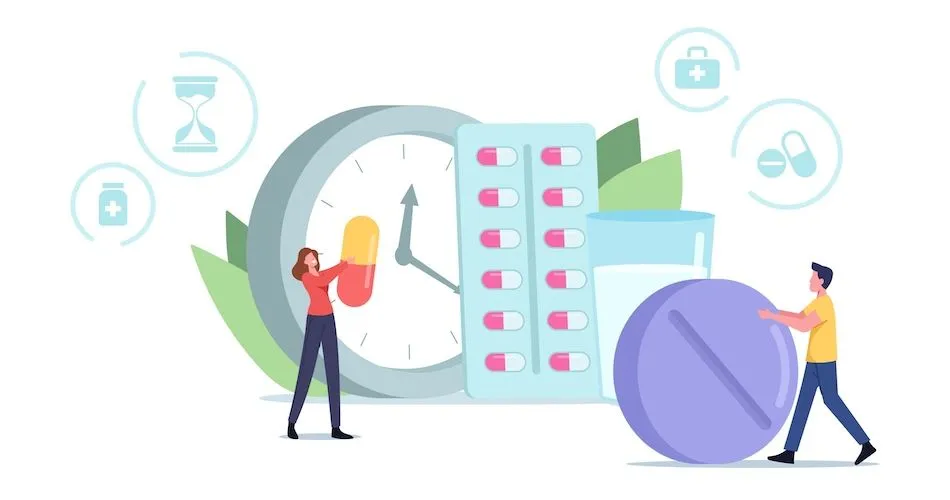What Do CLL Patients Value Most When Choosing a BTK Inhibitor?

Although several BTK inhibitors are available, little is known about how people with chronic lymphocytic leukemia (CLL) and small lymphocytic lymphoma (SLL) make treatment decisions when choosing between these options.
Reading about other patients' experiences selecting a BTK inhibitor can offer valuable insights to consider during discussions with your doctor.
What People with CLL/SLL Prioritize in Treatment
To learn what matters most to patients when choosing a BTK inhibitor, a survey was conducted between March and June 2024 led by Sikander Ailawadhi, MD, of the Mayo Clinic. The results were presented at the 2024 ASH conference.
The survey included 200 adults in the United States who had been diagnosed with CLL or SLL. The results showed that when choosing a BTK inhibitor, patients focused on treatments that:
- Increased life expectancy: 93% of patients considered this the most important factor
- Improved chances of remission or cure: 84% prioritized treatments that could eliminate the cancer
- Slowed cancer progression: 67% wanted treatments that could slow down CLL/SLL
While effectiveness was a top concern, side effects also played a major role in decision-making. Most patients (89%) had previously experienced at least one side effect from their treatment. The most common side effects reported were fatigue (76%), diarrhea (51%), headache (51%), and nausea or vomiting (51%).
When comparing specific treatment attributes, the three most important factors for patients were:
- The impact of atrial fibrillation on quality of life: Patients ranked this as the most concerning side effect of BTK inhibitors
- Progression-free survival (PFS): The longer a treatment kept the cancer from worsening, the more valuable it was
- The impact of headaches on quality of life: Patients considered frequent or severe headaches a major downside to treatment
What Patients Were Willing to Trade Off
Patients stated they would reduce 1.5 to 2.5 years of progression-free survival if it meant fewer side effects, such as avoiding significant diarrhea, high blood pressure, major headaches, and severe atrial fibrillation. They also preferred a once-daily treatment instead of a twice-daily regimen, even if that resulted in one year less of PFS.
Why This Matters for Treatment Decisions
These findings highlight the importance of including patient perspectives when selecting a BTK inhibitor. Although extending a patient’s life with treatment is important, supporting their quality of life by reducing difficult side effects is also vital.
Shared decision-making between doctors and patients can help ensure that treatment plans align with both medical effectiveness and patient preferences.
Ask your care team the following questions to ensure your preferences are included in the discussion when selecting a treatment:
- What common side effects should I expect from this treatment, and what supportive measures can be given to manage them?
- Are there alternative therapies with a lower risk of side effects?
- Are there warning signs of serious side effects I should look for?
- When should I contact you/the clinic if I am experiencing a side effect?
Looking Ahead
Future research should continue exploring how patient preferences affect treatment choices and outcomes. Understanding these factors can help doctors tailor treatment recommendations, improve patient satisfaction, and support better adherence to therapy. As new treatments become available, ongoing studies will be essential to refine approaches to CLL/SLL care and ensure that patients receive the best possible treatment for their individual needs.
Help your perspective shape research by clicking the button below to participate in simple surveys.
Share Your Input in CLL Research
Source:
Although several BTK inhibitors are available, little is known about how people with chronic lymphocytic leukemia (CLL) and small lymphocytic lymphoma (SLL) make treatment decisions when choosing between these options.
Reading about other patients' experiences selecting a BTK inhibitor can offer valuable insights to consider during discussions with your doctor.
What People with CLL/SLL Prioritize in Treatment
To learn what matters most to patients when choosing a BTK inhibitor, a survey was conducted between March and June 2024 led by Sikander Ailawadhi, MD, of the Mayo Clinic. The results were presented at the 2024 ASH conference.
The survey included 200 adults in the United States who had been diagnosed with CLL or SLL. The results showed that when choosing a BTK inhibitor, patients focused on treatments that:
- Increased life expectancy: 93% of patients considered this the most important factor
- Improved chances of remission or cure: 84% prioritized treatments that could eliminate the cancer
- Slowed cancer progression: 67% wanted treatments that could slow down CLL/SLL
While effectiveness was a top concern, side effects also played a major role in decision-making. Most patients (89%) had previously experienced at least one side effect from their treatment. The most common side effects reported were fatigue (76%), diarrhea (51%), headache (51%), and nausea or vomiting (51%).
When comparing specific treatment attributes, the three most important factors for patients were:
- The impact of atrial fibrillation on quality of life: Patients ranked this as the most concerning side effect of BTK inhibitors
- Progression-free survival (PFS): The longer a treatment kept the cancer from worsening, the more valuable it was
- The impact of headaches on quality of life: Patients considered frequent or severe headaches a major downside to treatment
What Patients Were Willing to Trade Off
Patients stated they would reduce 1.5 to 2.5 years of progression-free survival if it meant fewer side effects, such as avoiding significant diarrhea, high blood pressure, major headaches, and severe atrial fibrillation. They also preferred a once-daily treatment instead of a twice-daily regimen, even if that resulted in one year less of PFS.
Why This Matters for Treatment Decisions
These findings highlight the importance of including patient perspectives when selecting a BTK inhibitor. Although extending a patient’s life with treatment is important, supporting their quality of life by reducing difficult side effects is also vital.
Shared decision-making between doctors and patients can help ensure that treatment plans align with both medical effectiveness and patient preferences.
Ask your care team the following questions to ensure your preferences are included in the discussion when selecting a treatment:
- What common side effects should I expect from this treatment, and what supportive measures can be given to manage them?
- Are there alternative therapies with a lower risk of side effects?
- Are there warning signs of serious side effects I should look for?
- When should I contact you/the clinic if I am experiencing a side effect?
Looking Ahead
Future research should continue exploring how patient preferences affect treatment choices and outcomes. Understanding these factors can help doctors tailor treatment recommendations, improve patient satisfaction, and support better adherence to therapy. As new treatments become available, ongoing studies will be essential to refine approaches to CLL/SLL care and ensure that patients receive the best possible treatment for their individual needs.
Help your perspective shape research by clicking the button below to participate in simple surveys.
Share Your Input in CLL Research
Source:

about the author
Megan Heaps
Megan joined HealthTree in 2022. She enjoys helping patients and their care partners understand the various aspects of the cancer. This understanding enables them to better advocate for themselves and improve their treatment outcomes.
More on Conferences
Get the Latest Leukemia Updates, Delivered to You.
By subscribing to the HealthTree newsletter, you'll receive the latest research, treatment updates, and expert insights to help you navigate your health.












